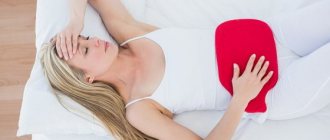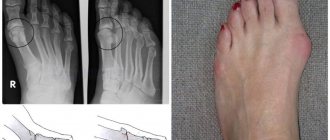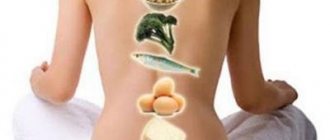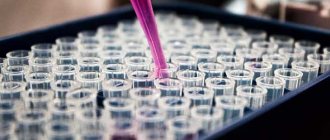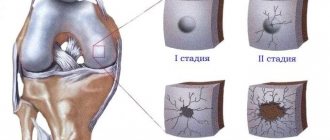Arthrosis is a joint disease that is chronic. Degenerative changes occur in articular cartilage, that is, it is gradually destroyed.
It all starts with a slight crunch in the joints when bending the limbs, which few people pay attention to. Then there is pain when moving. When the disease gains momentum, the joint loses its mobility, and the pain becomes unbearable. Unfortunately, many people delay treatment and seek help in the final stages. Arthrosis, like any other disease, is much more treatable at the initial stage. In this case, it is possible not only to relieve inflammation and pain, but also to completely restore cartilage tissue.
To restore joints with arthrosis and other diseases of the musculoskeletal system, special drugs have been developed - Chondroprotectors. They not only reduce pain, but also help to activate the processes of restoring the cartilage tissue of the joints, acting on the cause from the inside and relieving inflammation.
What are chondroprotectors and how do they treat joints?
August 13, 2021
3287
4.8
1
Content
- What are chondroprotectors
- How to choose the right chondroprotector
- What is the composition of the chondroprotector?
- What chondroprotectors exist?
- What else you need to know about chondroprotectors
- Where does the mistrust of chondroprotectors come from?
- The best chondroprotectors for joints
- Teraflex
- Don
- Piascledine 300
- Artra
- Diaflex
- Honda Forte
On the Internet you can find a lot of information about chondroprotectors. Let's figure out what these drugs are, how they work, what they treat, and whether they are effective in principle.
How to choose the right chondroprotector
The main thing when choosing a chondroprotector is to carefully read the composition. Chondroprotectors contain components such as chondroitin sulfate, collagen hydrolysate and glucosamine. Moreover, each of these components is very important.
By method of application
There are such chondroprotectors:
- External
- gels and ointments that are applied to the skin at the site of the problem joint (external chondroprotectors often contain pain-relieving components). But many doctors are skeptical about this group of drugs and believe that they are ineffective. - Injectable
- these anti-inflammatory drugs are prescribed for serious joint diseases, and they are selected exclusively by a doctor. - Tablets and capsules
are chondroprotectors that are used for treatment and recovery after injuries and any damage to the joints. - Powdered
- such chondroprotectors are rare, but, for example, powdered collagen is absorbed much better than tableted collagen.
What is the composition of the chondroprotector?
The main active ingredients of chondroprotectors are glucosamine, chondroitin and collagen. A specific chondroprotector may contain either one of these components or be multicomponent. In any case, when choosing a chondroprotector, you must consult a doctor who is aware of your specific joint problem.
- Glucosamine.
This substance is produced by the cartilage tissue of joints. Glucosamine is found in synovial fluid (this is a kind of lubricant in the joint capsule that prevents joints from rubbing against each other). Glucosamine reduces inflammation, slows tissue breakdown, and helps produce chondroitin. - Chondroitin.
An important component of ligaments and cartilage. Chondroitin makes joints more elastic, flexible, and provides shock absorption when you put stress on your joints. Joint mobility usually improves after 1-3 months of taking chondroitin. Swelling goes away, pain decreases, cartilage begins to recover. - Collagen.
Collagen mainly consists of connective tissue (cartilage and ligaments), as well as nails and hair. Collagen is necessary for those who have damaged joints, as well as for their preventive strengthening.
Usually, when treating joints and ligaments, doctors prescribe new generation chondroprotectors - multicomponent ones, which contain a complex of all these substances.
Read also How to treat varicose veins: top 9 best ointments Varicose veins are easier to treat at the initial stage, so control the development of this disease. To treat varicose veins, there are effective ointments and gels that strengthen capillaries, relieve pain, swelling and inflammation.
What chondroprotectors exist?
We have figured out the composition of chondroprotectors, but there are so many similar drugs on the Internet and pharmacies that it is very difficult for a person to choose the right one on his own. What to focus on? All chondroprotectors are conventionally divided into three generations:
The first generation of chondroprotectors.
These are products for the treatment of joints, which are based on natural substances (animal cartilage or plant extracts).
Second generation of chondroprotectors.
These are single-component preparations containing one of these substances: chondroitin, glucosamine, hyaluronic acid or collagen.
Third generation of chondroprotectors.
These are multicomponent preparations for joints and ligaments, which contain several active ingredients: chondroitin, collagen and glucosamine. Sometimes they are supplemented with vitamins, minerals and polyunsaturated fatty acids. Compared to first and second generation drugs, such chondroprotectors are much more effective.
Joint destruction
Photos from open sources
Classification of chondroprotectors for arthrosis
These drugs can be classified according to how long ago arthrosis has been treated with chondroprotectors in medical practice:
- first generation, which are becoming less and less effective;
- second generation - chondroprotectors for joint arthrosis with complex effects, which include glucosamine and chondroitin;
- third generation - drugs that are distinguished by the highest degree of purification and the most effective combination of components.
The latest generation of drugs, which are considered one of the best chondroprotectors for arthrosis, includes Artradol.
What else you need to know about chondroprotectors
Rheumatologists say that it is important to choose the right form of the drug for the joints, as well as the composition. Products based on animal tissue and plant extracts (Alflutop, Rumalon, Piaskledin) do not have a pronounced protective effect on chondrocytes. But synthetic or semi-synthetic chondroprotectors (“Injectran”, “Teraflex”, “Diaflex”, “Honda”, “Arthra”) show a very pronounced positive effect if taken correctly. As for gels and ointments for joints, they help little. Doctors explain this by saying that the chondroprotective ointment penetrates the skin by 1-2 mm, and the joint is much deeper. Conclusion: only chondroprotectors in the form of tablets or injections are effective in treating joints and ligaments.
And, of course, you need to listen to the feelings of the patient himself. If this or that drug suits him (inflammation goes away, pain decreases, crunching goes away, mobility in the joint appears), then the specific chondroprotector is effective for him.
Where does the mistrust of chondroprotectors come from?
There have always been two opposing opinions regarding chondroprotectors (both among patients and among doctors and representatives of the pharmaceutical market): some are confident that such drugs are indispensable for the symptomatic treatment of arthrosis, others say that the positive effect of chondroprotectors is a myth. Moreover, in many countries, chondroprotectors are not included in the treatment protocols for osteoarthritis. Why is that? Because we all hope that a “magic pill” will immediately get rid of health problems, but we don’t want to make special efforts to solve the issue comprehensively. Treatment of joints is not only drugs, but also lifestyle changes, weight loss, dosed exercise, etc. Often we hope to start drinking chondroprotectors and quickly heal our joints. If there is no improvement, we give up this idea.
You should not expect a positive result from taking chondroprotectors if you have the third stage of arthrosis - here conservative treatment is useless, only surgical treatment.
But most rheumatologists are still confident that taking chondroprotectors will greatly improve the situation with arthrosis of the first or second degree, when the cartilage has not yet been destroyed and chondrocytes are alive.
In addition to facilitating gliding, synovial fluid nourishes cartilage
Photos from open sources
What is the problem with modern chondroprotectors?
Even the high market price of chondroprotectors would not pose a big problem if they were very effective. But, unfortunately, they cannot correspond to the declared properties, since glucosamine and chondroitin sulfate entering the bloodstream from the gastrointestinal tract are not able to penetrate from the blood into the joint fluid. In this case, every jelly, jellied meat or aspic would be no less effective.
It is easy to check the distribution pattern of any substance in the body after its administration by any method using a simple radioisotope method. Its essence consists in treating the drug with a radioactive label that is harmless to the human body and has a short duration of existence. By X-ray examination it is possible to determine exactly how it is distributed in the body. If an accumulation of drug particles is detected in the joint area, this will become full proof of its effectiveness.
But pharmaceutical companies are in no hurry to use this method and find many excuses. The reality is that glucosamine is recognized as a dietary supplement in the United States. And independent studies of chondroitin sulfate show that its effectiveness is comparable to the placebo effect.
The only research data that manufacturers of chondroprotectors rely on was obtained by subjective assessment of pain by patients using a visual analogue scale. This cannot confirm the presence of any therapeutic effect from taking chondroprotectors, other than the placebo effect.
It would be possible to talk about their effectiveness if we provide the world medical community with radioisotope research data or show that after taking chondroprotectors, there is at least a minimal increase in the thickness of thinned intervertebral discs.
Teraflex
Probably one of the most popular chondroprotectors produced in the USA, which contains chondroitin and glucosamine. This is an original drug with a fairly high cost. "Teraflex" effectively restores cartilage tissue and has no side effects. Many patients note clear positive dynamics while taking this chondroprotector. But be prepared to take Teraflex for a long time - 4-6 months, and sometimes a year. The drug is sold in packages of 60 to 200 tablets. “Teraflex” was actively advertised, so most people know it, although not all doctors consider it the most effective.
Teraflex
Contract Pharmacal Corporation, USA
Teraflex is a combination drug that contains two active substances: glucosamine hydrochloride and sodium chondroitin sulfate, which potentiate each other’s action.
Teraflex is used in the complex treatment of pathologies of the musculoskeletal system, which are accompanied by degenerative-dystrophic changes in the joint tissue, such as: osteoarthritis (primary and secondary); osteocondritis of the spine; degenerative-dystrophic pathologies of joints and spine; traumatic bone damage. from 308
5.0 1 review
1923
- Like
- Write a review
Causes of arthrosis and its features
This disease has several reasons why it occurs. These include:
- hormonal and metabolic disorders;
- poor blood supply to the joints;
- heredity;
- advanced age;
- joint injuries;
- excess weight.
With arthrosis, collagen and proteoglycans (complex proteins) that make up cartilage are destroyed. Gradually it becomes less elastic, then begins to crack, exposing the bone. The cartilage ceases to perform its function - shock absorption and uniform distribution of load during movement. The exposed bone is injured, and bone growths appear in the cartilage tissue. In the final stages, treatment of arthrosis with chondroprotectors, that is, medications, may no longer be effective and surgical intervention will be required.
Statistics show that arthrosis affects 6 to 12% of the population. With every decade, this disease makes more and more people disabled. At the same time, women suffer from it twice as often, although by the age of 65 there is practically no difference. By this age, more than half of people already suffer from arthrosis.
Not only the elderly, but also professional athletes and dancers are at risk. Arthrosis affects those who have the problem of a curved spine, excess weight, as well as lovers of high heels.
Treatment of the disease is long and difficult, so it is better to prevent it. Excessive physical activity with heavy weights, injuries and sudden movements should be avoided. Pay attention to preventive exercises, maintain weight within normal limits. And if the disease has already made itself felt, it is important not to miss these first “bells” and start treatment on time. If it is diagnosed in a timely manner, it can be completely cured with the help of drugs that are aimed at restoring cartilage tissue. They are called chondroprotectors.
Don
This German chondroprotector can be called one of the first on the Russian market; the drug contains 750 mg of glucosamine. “Dona” has shown its effectiveness in treating joints: the chondroprotector perfectly relieves pain, restores mobility to the joint and prevents it from collapsing. "Dona" is prescribed both as the only tablets for the treatment of joints and in complex therapy. By the way, you can buy Dona not only in tablets, but also in injections and powder for solution. In general, patients respond very well to this product, but at the same price it is now possible to buy a third-generation chondroprotector, which contains not one, but several active components.
Don
Rottafarm, Italy
Primary and secondary osteoarthritis, glenohumeral periarthritis, osteochondrosis, spondylosis, chondromalacia of the patella.
from 1246
2311
- Like
- Write a review
Way out
If the components of cartilage tissue cannot reach their destination through administration through the gastrointestinal tract or intramuscular injections, perhaps this can actually be achieved by application to the skin? In Russia today, Chondroxide ointments and creams are quite popular. But even in this case, no attempts were made to prove the effectiveness of its use.
Tests were carried out only on mice using isotope-labeled 3H-chondroitin sulfate. They showed that 14% of the substance was absorbed, which is generally not bad. But there is one thing... The thickness of subcutaneous fat and muscles over the joints in humans is much greater than in mice. And if we talk about the treatment of herniated intervertebral discs, then these will be completely incommensurable concepts, since these are deep-lying joints.
Thus, we can conclude that the lack of full-fledged clinical trials indicates the reluctance of manufacturers to leave the market and lose the lion’s share of profits. After all, such drugs sell well in all regions without exception.
Competent work of company representatives with loyal doctors also increases sales. Chondroprotectors are prescribed to patients in combination with other medications. And since they must be taken for a long time, the patient’s condition will certainly improve within a month or two. He is unlikely to find out what exactly led to a decrease in the severity of pain: an expensive chondroprotector, an affordable NSAID, or an intra-articular injection of a corticosteroid. And the answer is obvious.
Therefore, patients do not need to spend their last money on undergoing a course of treatment with chondroprotectors. There is a method with precisely proven effectiveness - the injection of artificially created synovial fluid into the affected joint. These are the drugs:
- Fermatron;
- Sinokrom;
- Synvisc;
- Vico-plus.
Literally one injection will help eliminate pain and crunching in joints for six months or a year. These preparations contain sodium hyaluronate, which takes part in the formation of collagen fibers and increasing the strength and elasticity of cartilage tissue.
These injections are usually performed in large, isolated joints. In case of osteochondrosis, restoring each intervertebral disc in this way is difficult, time-consuming and not always justified. In case of pronounced destructive processes or the formation of a hernial protrusion, no matter how much artificial synovial fluid is injected, this will not have a significant effect on its size.
A hernia cannot disappear on its own. Conservative treatment methods can slow down its progression and reduce the likelihood of complications such as compression of nerve roots or blood vessels. But the pathological formation can only be completely removed through surgery.
Piascledine 300
This chondroprotector made in France has a natural herbal composition. The active ingredients of “Piascledina 300” are unsaponifiable compounds of soybean oil and avocado oil. The chondroprotector helps improve metabolic processes in cartilage, reduces pain and inflammation, stops cell destruction, and improves joint mobility. You need to take Piaskledin 300 for at least six months. The product is a little expensive, but its effectiveness is high. The chondroprotector has virtually no side effects, so it has excellent ratings among both doctors and patients.
Piascledine
Laboratoires Expanscience, France
The contents of Piaskledin capsules are components from plant materials.
Oil extracts (unsaponifiable components) from avocados and soybeans have a regulating effect on metabolism in cartilage tissues. The drug has an anti-inflammatory effect. The substances of the drug have an analgesic effect. from 952
998
- Like
- Write a review
Artra
American chondroprotector with the best combination of quality and cost. This remedy is very popular among Russians. Arthra tablets stimulate regeneration in articular cartilage. The active substances of the chondroprotector are chondroitin and glucosamine (in equal proportions), and also contains calcium. "Arthra" is very effective for osteoarthritis of the spine and knees. "Arthra" is a third generation chondroprotector. A pronounced positive effect when taking the drug is noticeable after three months: pain and inflammation in the joints go away, swelling subsides, cartilage tissue is restored. A huge plus is that with the initial stage of joint disease, a complete cure can be achieved. Among the disadvantages of the drug "Arthra" are several side effects. Some patients report, for example, abdominal pain.
Artra
Unipharm Inc., USA
Artra is a combined chondroprotective drug for basic therapy of osteoarthritis of peripheral joints and spine with an enhanced therapeutic effect due to the interaction of two components - chondroitin and glucosamine.
from 1059
2448
- Like
- Write a review
Is it possible to combine it with alcohol?
Since medications are taken for a long time, patients wonder whether the drug can be combined with alcoholic beverages. Depending on the form of drug delivery, compatibility with alcohol is determined.
If you drink alcohol and take pills at the same time, you may develop side effects from the digestive system. These are nausea, vomiting, increased liver enzymes, and loose stools.
But in general there are no contraindications in this context. To be sure, carefully read the instructions for use. Usually, if there are restrictions, they write about them.
Diaflex
This Romanian-made chondroprotector is prescribed for the treatment of osteoarthritis. The active substance of Diaflex is diacerein. The chondroprotector slows down the destruction of cartilage, relieves inflammation and pain in the joint. The first positive effect after taking the drug is noticeable after 2-4 weeks. Diaflex can be purchased at a pharmacy with a prescription and is available in capsule form.
Diaflex
Rompharm Company SRL, Romania
The drug Diaflex is a non-steroidal anti-inflammatory drug (NSAID).
Diacerein is an anthraquinoline derivative, a diacetylated derivative of rhein. Metabolized to an active metabolite, rhein, it inhibits the activity of interleukin-1, which plays an important role in the development of inflammation and cartilage degradation in osteoarthritis. Inhibits the action of other cytokines (including interleukin-6, tumor necrosis factor-alpha). The action develops after 2-4 weeks. Diacerein has analgesic anti-inflammatory activity when taken orally. from 858
4.0 1 review
803
- Like
- Write a review
Chondroprotectors: effectiveness not proven
estimate
: 11
comment
In the current age of the Internet and skillfully presented information, any competent patient can tell you what is necessary to treat joints: you need to restore articular cartilage and you need to replenish the “lubrication” of the joint, i.e. intra-articular fluid. This goal seems to be best met by the prescription of drugs from the group of chondroprotectors.
The cost of these drugs is off the charts; the effect of their use is expected to be fabulous. But in reality, as a rule, regular use of chondroprotectors leads to disappointment for patients. What kind of drugs are these? And are they really as effective as advertising materials promise us?
Chondroprotectors (chondros-cartilage, protector) - literally: substances that protect cartilage (in particular, articular cartilage). This group of drugs has appeared quite recently. The second generation of drugs has been around for just over 10 years.
Depending on the time of development, there are 3 generations of chonroprotective drugs:
I generation (natural origin):
- animal origin (based on bone marrow and cartilage tissue of animals and fish) - Alflutop, Rumalon
- mucopolysaccharides - Arteparon (Mucartrin)
II generation (synthetic monodrugs)
- based on chondroitin sulfate - Mucosat, Chondroxide, Structum, Honsurid, Chondrolone, Chondrogard, Chondrosat, Artradol, Artiflex, Arthrox, Artrida, Toad Stone balm (dietary supplement)
- based on glucosamine - Dona, Artron flex, Sustilak, Elbona, Sinarta
III generation (complex synthetic drugs combining chondroitin sulfate with glucosamine) - Theraflex, Artra, Artron Complex, Chondroitin-complex, Formula-S, CONDROnova, Movex, Chondro-sila, Protekon, Inoltra (dietary supplement)
Chondroprotectors combined with non-steroidal anti-inflammatory drugs are now being developed and produced. For example, Teraflex Advance (a combination of ibuprofen, glucosamine sulfate and chondroitin sulfate). Some researchers classify combinations of chondroprotectors with drugs from other groups as a new, IV generation .
As a marketing ploy, the name “colloids” is sometimes used for some chondroprotective dietary supplements produced in the form of solutions. Although the name colloids does not characterize this specific group of drugs, but only one of the types of all existing solutions.
Separately, we should highlight substitutes (prostheses) for intra-articular fluid - preparations for intra-articular administration based on hyaluronic acid or polymers. These are Ostenil, Synvisc, Orthovisc, Gialgan, Gialual, Giastat, Gialurom, Giruan, Sinokrom, Suparts, Fermathron, Durolan, Coxartrum, ViscoPlus, Go-on, Euflexa, Hialubrix, Adant, Noltrex.
Abroad, the group of chondroprotectors is called SYSADOA (Symptomatic Slow Acting Drags of Osteoarthritis - symptomatic slow-acting drugs against osteoarthritis)
What do chondroprotector manufacturers say?
As the manufacturers indicate , due to the fact that chondroprotectors contain components of articular cartilage, which, when entering the body, are included in the damaged cartilage and promote its renewal, they:
- promote the restoration of articular cartilage tissue and also protect it from further destruction.
- They also help to normalize both the quantity and quality of intra-articular (synovial) fluid.
In addition, the constituent substances of chondroprotectors have a moderate anti-inflammatory effect as an additional effect.
As a result of this effect, the patient’s pain is reduced, joint function is restored and articular cartilage is strengthened.
The therapeutic effect develops after long-term use of the drugs. Usually no less than 3 weeks, and most often after 3-6 months.
It should be noted that, guided by this logic (to replenish diseased components of the joints with sources from outside), people who have suffered from arthrosis for many years often do this. They try to eat jellied meat, gelatin, or just a decoction of seeds. And taking the comparison to the level of grotesquery, one can recall the North American Indians who eat the heart of a defeated enemy, but who was brave during his lifetime, in order to gain his courage.
And chondroprotectors should affect not only articular cartilage, but also all cartilage of the body (including ear, nasal cartilage, etc.).
But the moderate anti-inflammatory effect of chondroprotectors needs to be taken a closer look.
Long-term practice demonstrates the controversial effectiveness of chondroprotectors
But many years of practice demonstrate the controversial effectiveness of a group of drugs - chondroprotectors. We regularly encounter patients who take chondroprotectors daily for several years and do not notice any therapeutic effect from them. They continue to take these drugs, apparently, due to inertia and the ongoing intense influence of advertising information. Despite this, they continue to be widely prescribed by doctors and used by patients with joint and spine problems.
The initially declared effect of restoring articular cartilage has not yet found any confirmation. To determine whether articular cartilage has been restored, it is enough to compare conventional x-rays of the diseased joint taken before and after treatment with chondroprotectors. The height of the joint space indirectly indicates the thickness of the articular cartilage layer. Thus, after restoration of the cartilage, the height of the joint space should increase. Unfortunately, this has never happened before. The height of the joint space always remains unchanged, or even decreases.
At best, only the effect of protecting articular cartilage from further destruction is observed during the period of taking these drugs. But he is also doubtful.
Also, many questions arise about the bioavailability of various forms of drugs. What is the actual amount of the active substance that gets into the affected joint if the drug is not administered directly into the joint, but is taken orally (in the form of tablets, powders), in the form of intramuscular injections, and even more so in the form of ointments. Apparently, with such methods of administration, only a symbolic amount of the drug reaches the desired area.
Why is there sometimes a positive effect when taking chondroprotectors?
Despite all the above circumstances, a relatively small proportion of patients sometimes develop a positive effect after taking chondroprotectors.
In the vast majority of cases, these are patients in mild stages of the disease. In advanced cases of disease, the effectiveness of chondroprotectors is close to zero.
What can this improvement in condition be associated with in some patients, if taking chondroprotectors does not cause restoration of articular cartilage? And if there is no clear data on the improvement of cartilage condition as a result of taking chondroprotectors? The positive effect in these cases can be explained not by a chondroprotective effect, but by an anti-inflammatory effect
. The mechanism of action of chondroprotectors is associated with stimulation of chondrocyte function, decreased activity of lysosomal enzymes (metalloproteinases), and increased resistance of chondrocytes to the effects of proinflammatory cytokines. Those. chondroprotectors have the same effect as non-steroidal anti-inflammatory drugs (NSAIDs) - Diclofenac, Movalis, Ortofen and many others. True, the anti-inflammatory effect of chondroprotectors is weaker than that of NSAIDs and develops over a long period of time.
Yes, NSAIDs can cause various side effects when taken for a long time (primarily by affecting the gastric mucosa). But chondroprotectors, when taken long-term (and they are recommended to be taken for many months), can also cause side effects. A natural question arises: in this case, isn’t it better to use non-steroidal anti-inflammatory drugs?
Let’s even express such a “seditious” thought: maybe there is no medicinal group of chondroprotectors (in the sense that there are no drugs that “protect” articular cartilage)? Maybe the so-called chondroprotectors should be classified as anti-inflammatory drugs with moderate activity? Then non-steroidal anti-inflammatory drugs (NSAIDs) are more active anti-inflammatory drugs. And the most active are hormonal anti-inflammatory drugs (glucocorticoids). In this case, everything falls into place.
It is not without reason that the most modern chondroprotectors try to include non-steroidal anti-inflammatory drugs (for example, Teraflex Advance). The efforts of pharmacists are directed not at protecting and “restoring” cartilage, but at enhancing the fight against inflammation.
Also, do not forget about the banal effect of self-hypnosis caused by an aggressive advertising campaign.
It should also be remembered that, according to the recommendations of the developers of chondroprotective drugs themselves, it makes sense to prescribe them only in the initial and middle stages of arthrosis (I and II). In advanced stages (III and IV), there are no indications for prescribing chondroprotectors, even according to the official version.
Unbiased Research
Here are just some data from unbiased foreign studies published in authoritative publications in the USA and Great Britain:
- The New England Journal of Medicine
(2006): The conclusion of a meta-study conducted on a group of 1583 patients: chondroitin sulfate, glucosamine and any combination of these did not surpass the effect obtained with a regular placebo.
- American College of Physicians
(2007): Large-scale studies indicate that the symptomatic benefit of chondroitin is minimal or non-existent. The use of chondroitin in routine clinical practice should therefore be rethought.
- The BMJ: leading general medical journal
(2010): Findings from 10 studies in a group of 3803 patients: Compared with placebo, chondroitin and glucosamine and their combinations showed no benefit.
Below are several stories on this topic from the popular TV program “Health with Elena Malysheva”:
Your browser does not support the video tag.
Your browser does not support the video tag.
What do you think about the advisability of using chondroprotectors?
